Ever feel a little overwhelmed by all the new video game trends and just want to understand what makes retro gaming culture so special?
I get it. It’s easy to feel curious when you see people talking for hours in forums about how old-school titles like Donkey Kong shaped the games we play today.
So, let’s explore this together. I’m going to walk you through why these pixel art classics still mean so much, how they bring people together, and what makes them feel so different from the flashy, modern games we see now.
Key Takeaways
Retro gaming typically includes arcade and home console games from before the early 2000s, like Donkey Kong Country (SNES), Mega Man, and the Atari 2600. Its culture is built on nostalgia, simple controls, pixel art, and shared memories of split-screen multiplayer.
Modern tools like the multi-system emulator RetroArch let fans replay classics such as Metal Slug or Galaga on new hardware. Official remasters are also huge, with collections like the Crash Bandicoot N. Sane Trilogy selling over 20 million copies as of 2024.
The collector’s market has seen controversy, with companies like Wata Games grading games and helping drive the value of sealed titles to record highs. A sealed Super Mario game sold for over $2 million in 2021, leading to claims of price manipulation.
Copyright lawsuits are a big part of the scene. The 1999 case Sony v. Connectix helped legalize emulators, but sharing game code remains illegal. Major penalties include the Yuzu emulator’s $2.4 million settlement with Nintendo in 2024 and LoveROMs.com’s $12 million case in 2018.
Active communities on forums like AtariAge and Reddit’s r/retrogaming, along with YouTube channels like the Angry Video Game Nerd, keep the culture alive. Fans gather at retro conventions such as the Classic Tetris World Championship to trade tips on everything from Ocarina of Time puzzles to Metal Slug speedruns.
Table of Contents
The Origins of Retro Gaming Culture
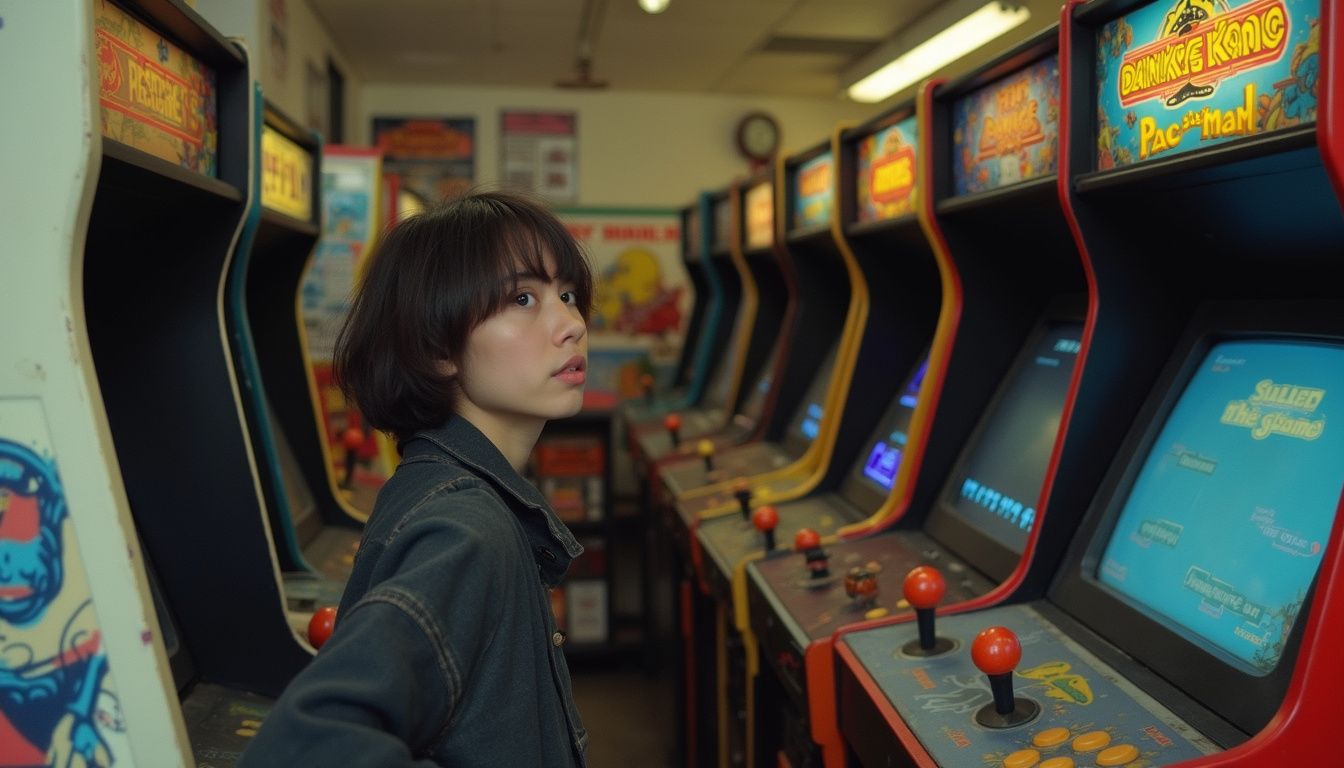
I grew up pumping quarters into the arcade’s Galaga machine, completely mesmerized by those crisp chiptunes and flashing high scores. Then, home consoles like the Nintendo Entertainment System brought that magic right into my living room, changing how I saw games forever.
Early arcade games and their influence
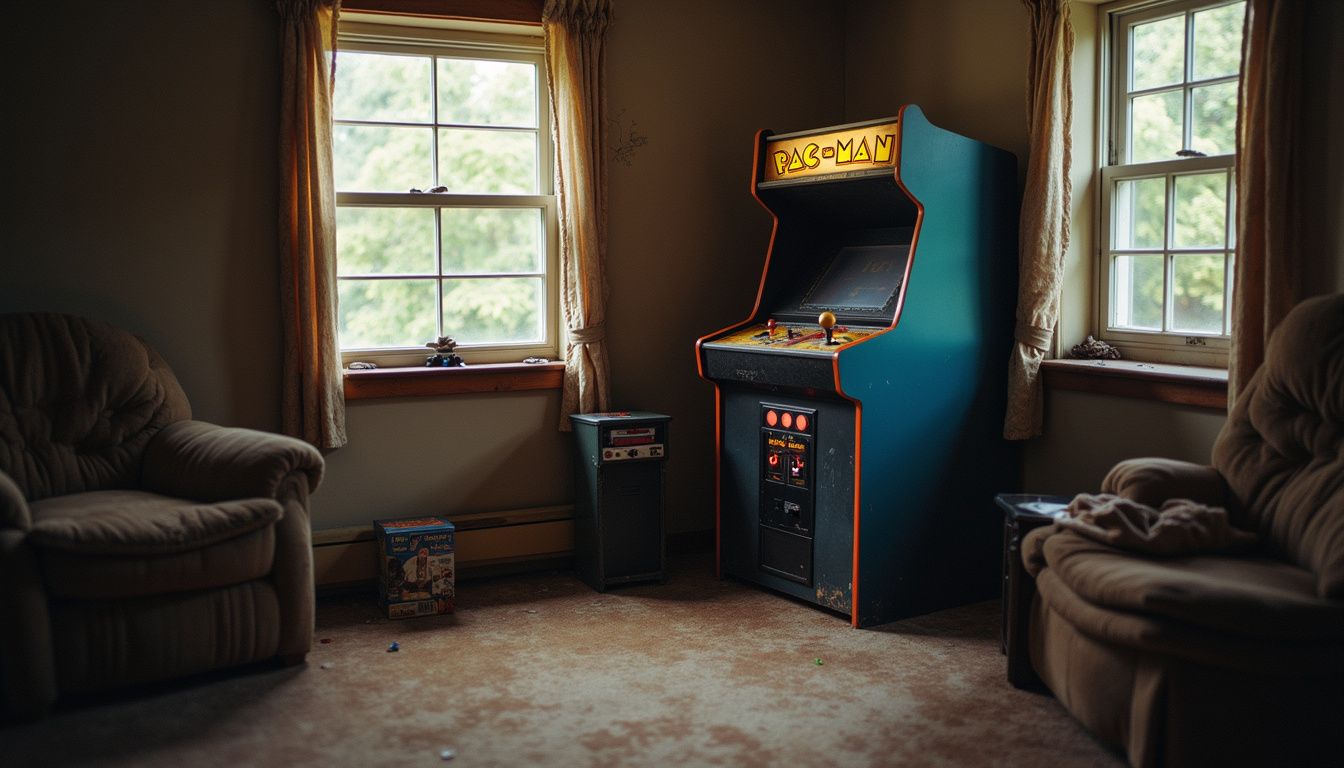
The whole scene really kicked off with simple but addictive games. Pong set the stage in the mid-1970s, proving you didn’t need complicated graphics to have a blast. Even Steve Jobs had a hand in creating Breakout, a game that forced me to master my paddle skills.
Then Pac-Man landed in 1980 and started a worldwide maze craze. It was a true phenomenon, generating over $2.5 billion in quarters alone by the 1990s. Soon after, Galaga hit arcades with space battles that made my allowance disappear in minutes.
Donkey Kong grabbed headlines next, introducing us to Jumpman (who later became Mario) and Pauline with some wild platforming moves. Arcades became social hubs, magnets for gamers like me looking for new challenges.
In 1992, id Software released Wolfenstein 3D and completely blew our minds with its fast first-person shooter action. It changed FPS games forever. At the same time, Street Fighter‘s fighting spirit pulled huge crowds, sparking rivalries that still live on at events like the Evolution Championship Series (Evo).
“Chasing high scores under flickering lights taught us more about competition, and friendship, than any trophy ever could.”
Even now, you can find the spirit of these classics in unexpected places. Modern iGaming platforms sometimes offer VPN casino access to play slot games that feel just like old-school titles such as Bomberman or Metal Slug.
The rise of home consoles in the 1980s and 1990s
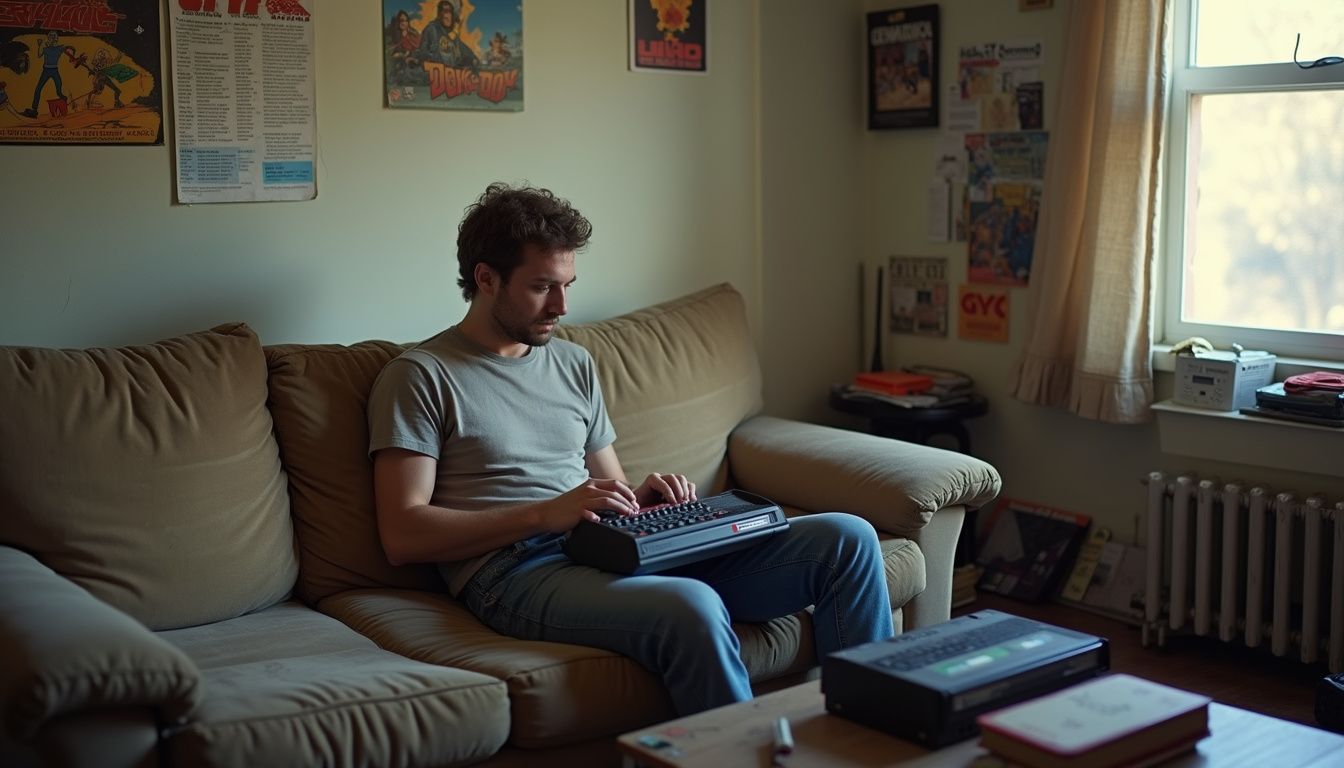
The Atari 2600 completely changed my childhood. Watching that wood-paneled console come to life, I realized home gaming was here for good. But the industry hit a wall with the video game crash of 1983, when the market was flooded with too many low-quality games. For a moment, it seemed like consoles were just a fad.
Then Nintendo stepped in. The Nintendo Entertainment System (NES), released in the US in 1985, practically saved the industry. Nintendo’s “Official Seal of Quality” was a promise that its games wouldn’t be like the buggy, broken titles that caused the crash.
This era gave us so many classics. Nintendo’s Donkey Kong Country, released in 1994, used incredible graphics for its time and had a soundtrack that I can still hum today. Sega’s Fantasy Zone II remake on the Super Famicom and Streets of Rage became my go-to beat ’em up games for family nights.
We went from analog joysticks to precise digital controls, and watched as chunky pixel art transformed into full 3D worlds with Super Mario 64 and Ocarina of Time. If you loved browsing shops for amazing box art, this was your time. A quick look at a Nintendo Power posters gallery always hits me right in the feels when I see Princess Peach’s Castle or Blinky chasing Pac-Man.
Defining Retro Gaming in Modern Society
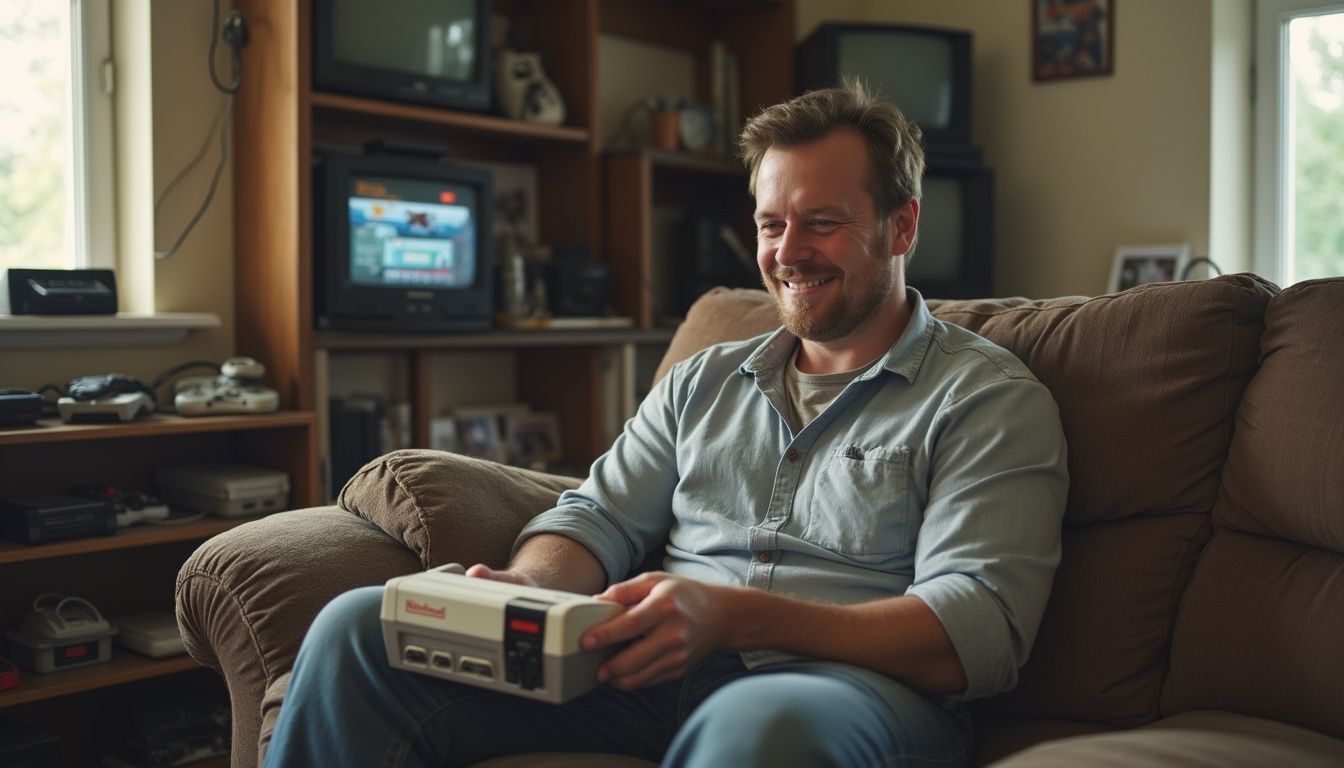
Retro gaming isn’t just about old cartridges, it’s about a feeling. It’s the muscle memory of blowing into a Game Boy game or finally figuring out a puzzle in Ocarina of Time. Today, it means different things to different people, whether you’re hooked on pixel art RPGs or firing up an emulator.
What qualifies as retro gaming today
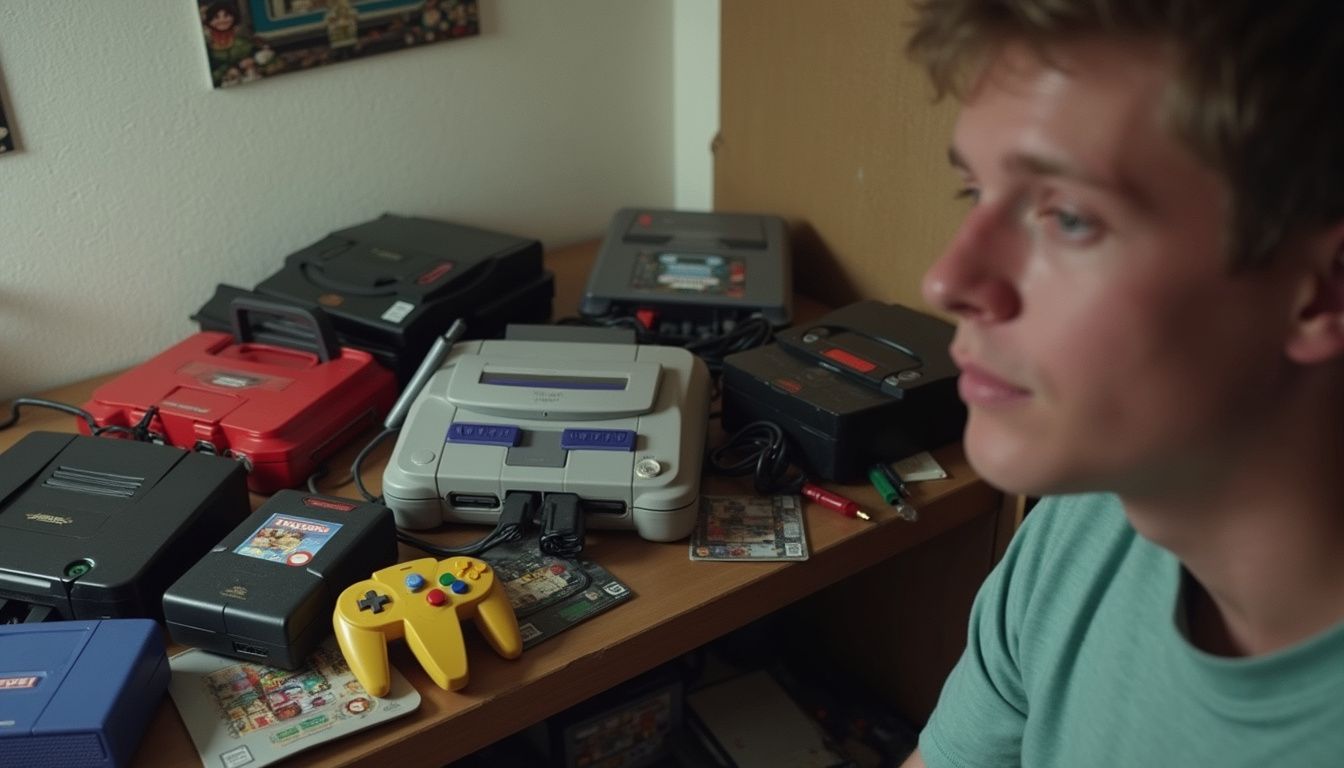
Generally, anything from before 2004 is considered retro, putting consoles like the Sega Genesis, PlayStation One, and N64 firmly in that category. I always name-check the Game Boy and Super Nintendo as pure classics. It’s not just about original hardware either, using a virtual console or video game emulators to relive the magic of GoldenEye 007 split-screen multiplayer totally counts.
The industry itself is booming, with the global retro gaming console market valued at $3.8 billion in 2025. The scene is also kept alive by modern indie developers. Games like Shovel Knight and Celeste use pixel art graphics and chiptune soundtracks that feel straight out of an old-school Mario or Mega Man title.
This blend of old and new shows just how much generational longing shapes what we now call retro.
Retro gaming is not just about playing, it’s about reconnecting with memories pixel by pixel.
The influence of generational nostalgia
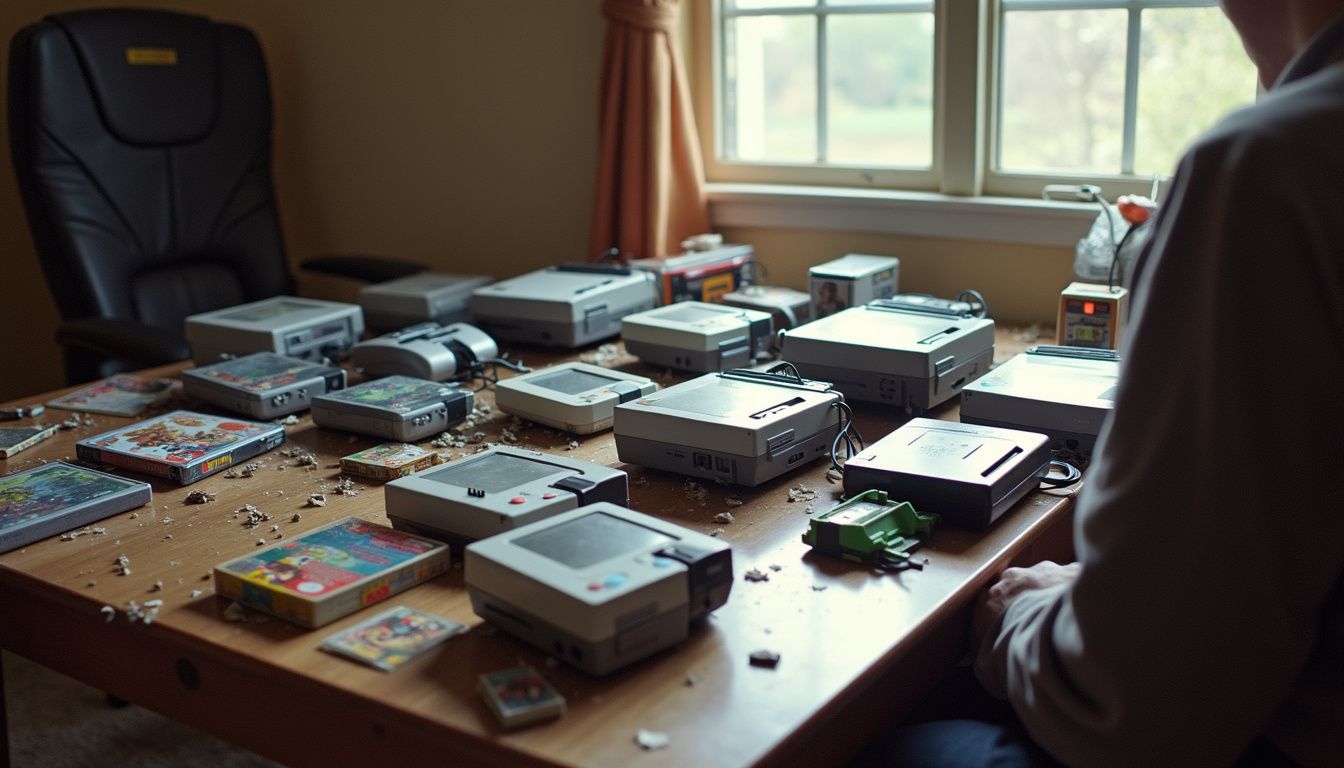
When I feel that wave of nostalgia, I often reach for my old Game Boy or load up Donkey Kong Country. During the COVID-19 pandemic, millennials like me caused prices for vintage consoles to soar because we were all looking for those simple joys from our childhoods.
Many of us craved the days of local split-screen multiplayer, charming pixel art, and familiar soundtracks. It wasn’t just about playing, it was about recapturing something lost in today’s complex open-world sandbox games.
This nostalgia fuels more than just fun. For many fans, authenticity is key. Some hunt for original cartridges to avoid issues with software piracy or the unauthorized distribution of emulated copies. Others form online groups to share stories about finally beating Ganon in Ocarina of Time with siblings crowded around an old TV.
This sense of community helps bridge generational gaps, as younger players are drawn in by the originality and simplicity. If you’re curious about gaming demographics, it’s interesting to see who spends the most time gaming now compared to a decade ago.
Key Features of Retro Games
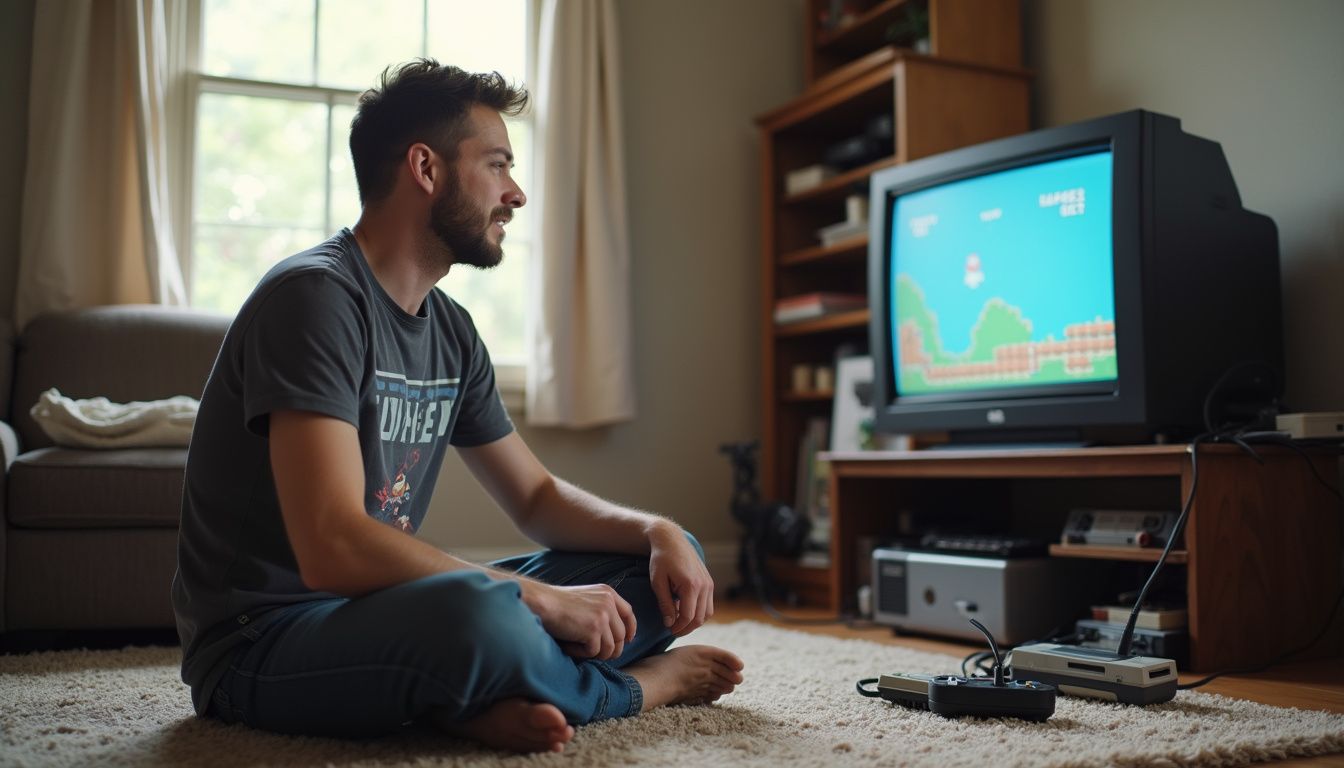
Retro games hook me right away with their simple controls and bold pixel art, like in Sonic the Hedgehog (1991) or Mega Man. My friends and I still talk about our split-screen multiplayer nights playing Super Mario World or throwing down in Tekken (1994), and those memories really stick.
Simplistic yet engaging gameplay mechanics

Games like Pong and early Atari 2600 titles grabbed my attention with one joystick and one button. There was no need for a hundred combos. I found joy in the easy-to-learn moves of Mega Man or Sonic the Hedgehog (1991), where the challenge came from mastering patterns and timing, not memorizing inputs.
This approach was famously championed by Nintendo’s Shigeru Miyamoto, who believed in perfecting a core, fun mechanic first. His philosophy was to make games as products that were intuitive and user-friendly, not just “works of art.”
Super Mario World let me pick up and play in seconds. Ocarina of Time kept things clear: solve puzzles, fight enemies, and explore. Retro games put fun first, and their thoughtful design is why they still feel so rewarding today.
Iconic pixel art and soundtracks
![]() Pixel art is the heart of the retro aesthetic. Games like Mega Man and Donkey Kong Country created entire worlds with just a few blocks of color. I remember grinning at every little explosion in Metal Slug because each sprite told a story with just a handful of pixels.
Pixel art is the heart of the retro aesthetic. Games like Mega Man and Donkey Kong Country created entire worlds with just a few blocks of color. I remember grinning at every little explosion in Metal Slug because each sprite told a story with just a handful of pixels.
The music is just as memorable. Those chiptunes from classic Zelda games or the Mario franchise are unforgettable. These iconic soundtracks came from composers like Koji Kondo (Mario, Zelda) and Nobuo Uematsu (Final Fantasy), who had to be incredibly creative with limited hardware. The NES sound chip, for example, had only five audio channels, which forced a level of creativity that defined the chiptune genre.
Local multiplayer experiences

The art and sound set the mood, but nothing beats what we now call “couch co-op.” Gathering friends on a couch for local multiplayer fun was the best. The short controller cords on the NES meant we all had to squeeze together, making games like Warlords a chaotic, pizza-fueled blast.
Split-screen multiplayer in classics like GoldenEye 007 or Mario Kart 64 kept us side-by-side, literally bumping elbows after a close race. There was no lag and no usernames, just real reactions.
This is why companies like Intellivision brought back systems like the Amico. Its creator, Tommy Tallarico, even called its mission “TOGETHER AGAIN” to highlight the importance of those face-to-face battles. Local play slams the door on online toxicity, because it’s hard to trash talk when your rival is sitting right next to you.
The Resurgence of Retro Gaming
Old-school games are everywhere again, right? Just dust off your Game Boy or fire up a split-screen multiplayer session, and you’ll see why the classics still pack a punch.
The role of modern emulators and remasters
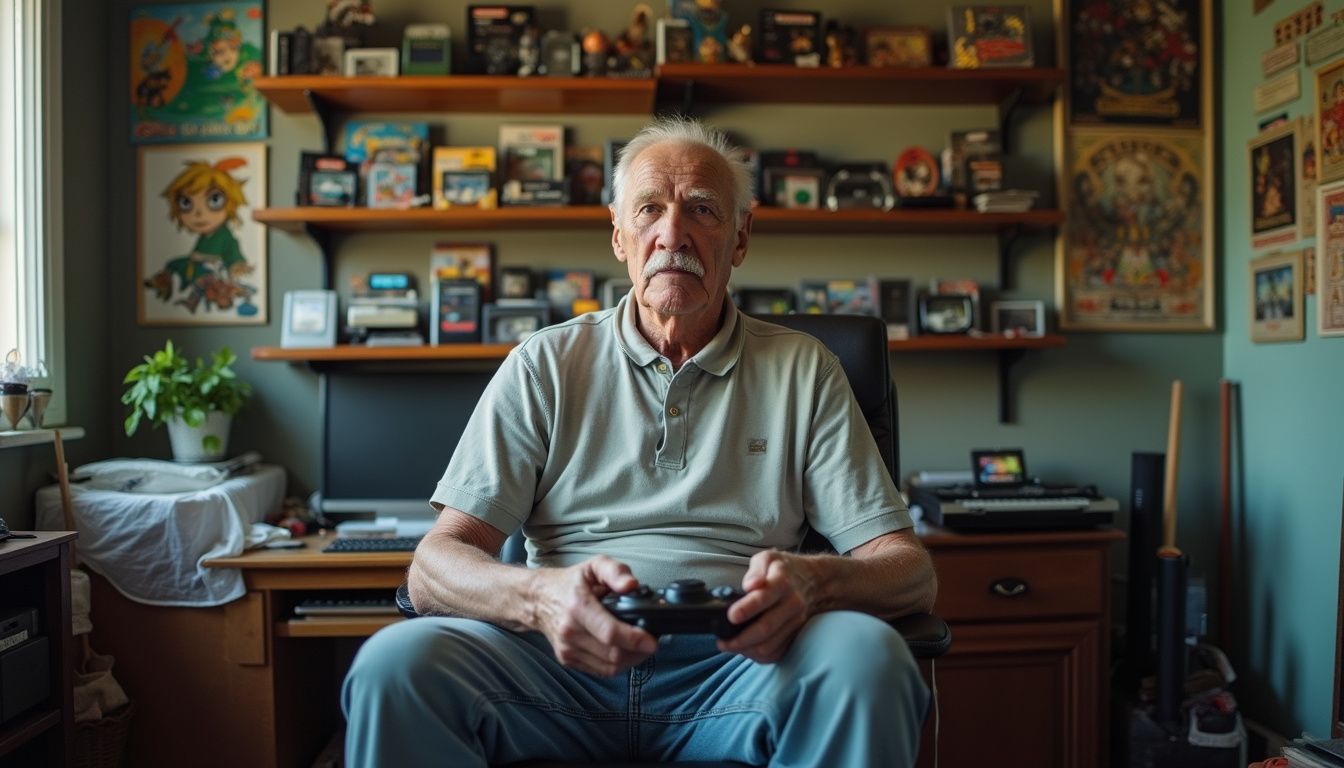
Modern emulators gave my old favorites a second life. I can load ROM files of classics like Mega Man, Donkey Kong Country, and Metal Slug right onto my PC using powerful, all-in-one programs like RetroArch. These tools make thousands of games accessible to everyone.
Publishers have also embraced enhanced remakes. The Crash Bandicoot N. Sane Trilogy was a massive success, selling over 20 million copies by June 2024. Digital stores like GOG.com and Steam also serve up retro hits, while some fans create their own fangames, which are expansions or remakes for games long abandoned by big companies.
These remakes and emulators keep the classics alive for a new generation. And if you’re wondering what happened to a whole category of classic browser games, you can find out if flash games still work today.
Popularity of retro gaming consoles
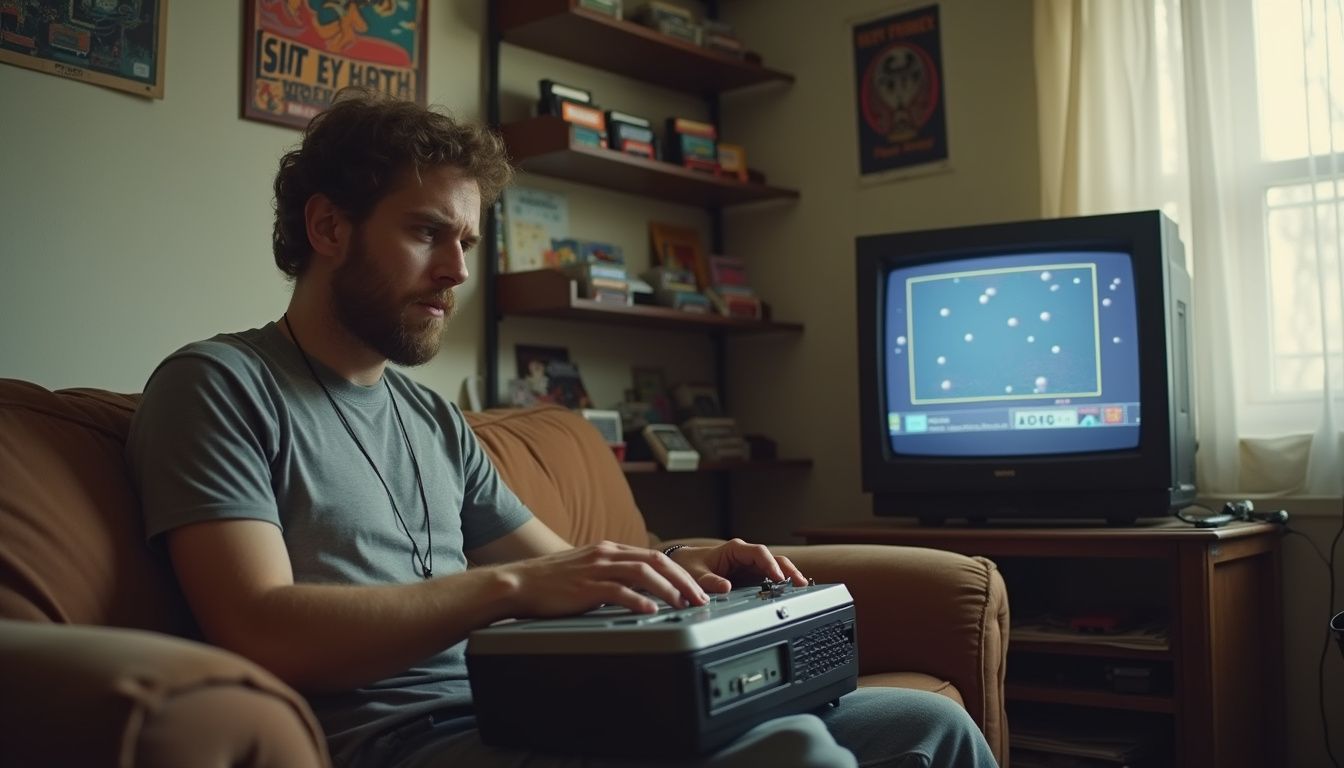
With emulators sparking new interest, physical retro gaming consoles have made a huge comeback. Plug-and-play devices from Atari, Sega, and Nintendo now sit on store shelves, ready to connect to a modern TV with pre-loaded classics.
The NES Classic Edition and SNES Classic Edition were huge hits for Nintendo, selling over 10 million units combined by 2018. These systems made it incredibly easy for anyone to dive back into the classics.
You can find many of these for under $100, and it’s often easy to find original cartridges for games like Mega Man or Donkey Kong Country for less than $10 each. It’s never been easier to press start again.
The growing market for vintage and graded games
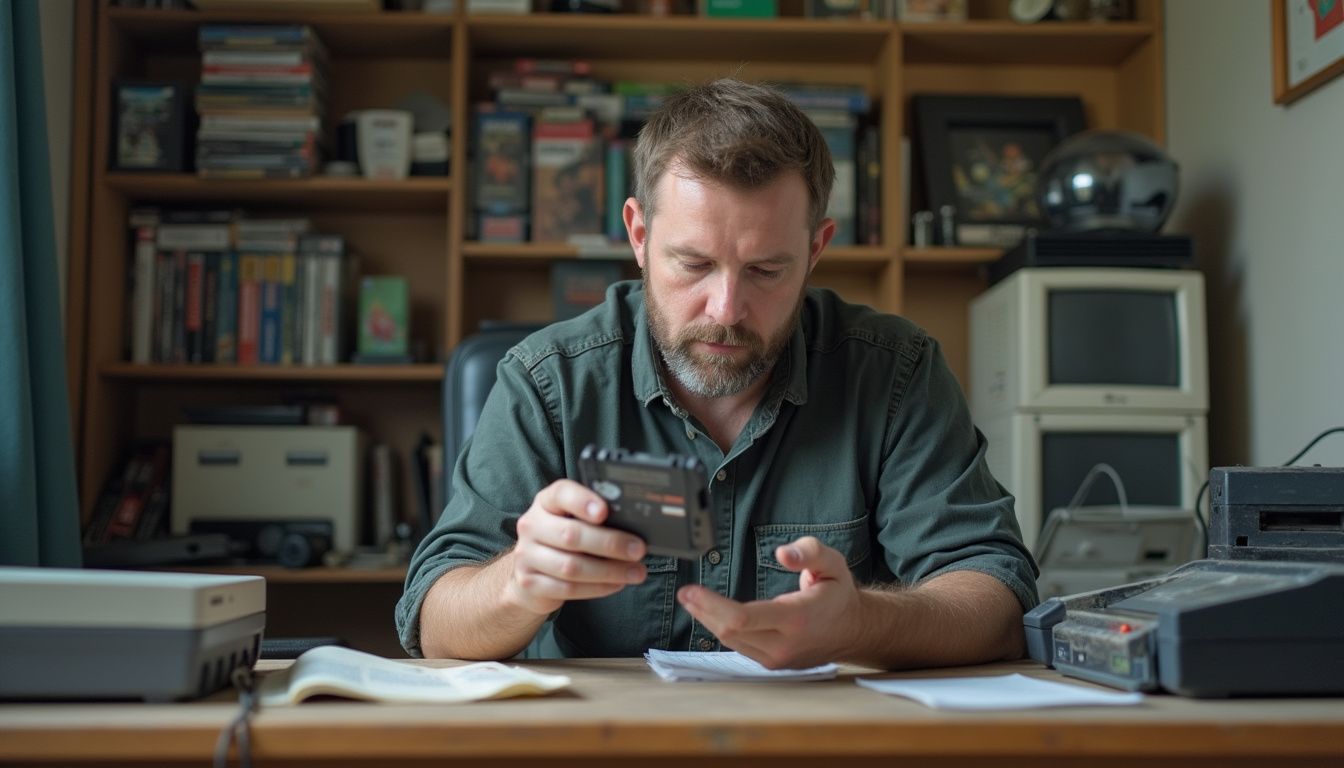
As interest in consoles grew, old cartridges and classic Game Boy systems became hot collectibles. Scarcity drove prices up on sites like amazon.com, especially during the pandemic when demand exploded.
This led to the rise of graded games, where companies like Wata Games assign a condition score to sealed copies. This market became controversial after a few sales broke records, like a sealed Super Mario 64 selling for $1.56 million at Heritage Auctions in 2021. Soon after, claims of market manipulation flooded online forums.
Many of these concerns were brought to light in a popular YouTube documentary by Karl Jobst called “The Video Game Wata Scandal.” The controversy has made collectors more cautious, but for me, owning these pieces of history is about more than just value, it’s about holding a piece of my childhood.
Retro Gaming Communities

I find online retro gaming forums and local meetups packed with people trading tips about Metal Slug, Ocarina of Time, and the best way to enjoy split-screen multiplayer. If you want in on the action, it’s easy to connect.
Online forums and social media groups
Retro gaming thrives on connection and shared memories. Today, these communities are more active than ever.
- Forums like Digital Press or AtariAge are still buzzing with life, letting me trade hacks for Mega Man boss runs or debate the best survival horror games on handhelds.
- Reddit is a huge hub for fans. The r/retrogaming subreddit has over a million members sharing their finds, custom setups, and nostalgic stories.
- Discord servers have become modern fanzines. In one group, I can see Cloud Strife memes right next to debates over whether Breath of the Wild is better than A Link to the Past.
- YouTube channels like the Angry Video Game Nerd bring big laughs while poking fun at bad games. Other channels like My Life in Gaming do deep dives into how to get the best picture quality from old consoles.
Retro gaming conventions and events
Retro gaming events give me a chance to meet other fans and dive deep into the magic of these classics. These conventions have taken the passion for pixel art global.
- The Classic Tetris World Championship draws huge crowds, with millions tuning in online to watch players stack blocks at incredible speeds.
- MAGFest (Music and Gaming Festival) is a massive event on the US East Coast that celebrates video game music and culture, attracting over 20,000 attendees.
- The Portland Retro Gaming Expo (PRGE) is another huge gathering where fans can play hundreds of classic arcade and console games.
- At these events, vendors sell everything from graded Pokémon cartridges to custom pixel art prints of legendary scenes, like Link pulling the Master Sword from its pedestal.
I keep coming back because nothing beats the energy of these gatherings. Every event helps keep the culture alive, passing the torch down through generations one high score at a time.
The Cultural Impact of Retro Gaming
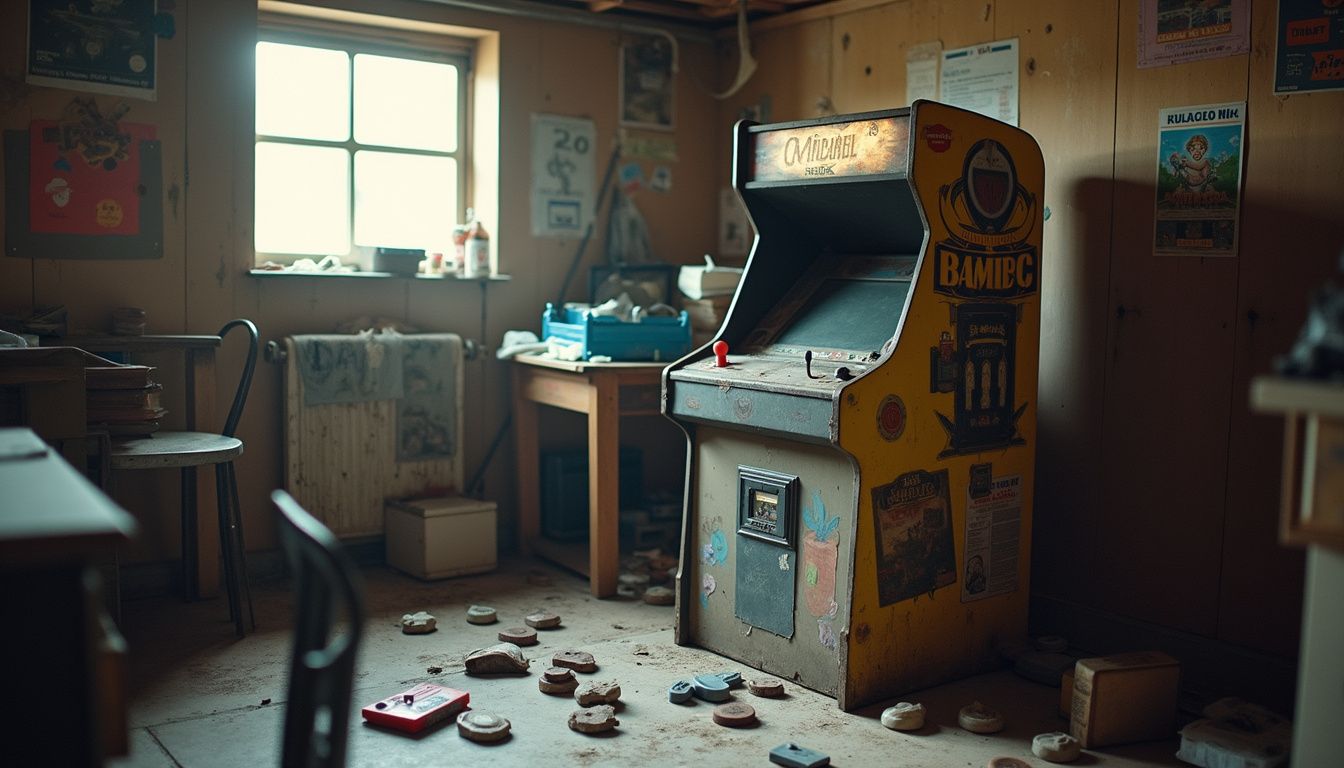
Retro gaming has shaped how I see myself as a player, and it continues to pop up in new and surprising cultural trends. These pixel-packed classics are more influential than ever.
Shaping gamer identity and public memory
When I see my favorite games like Mega Man and Ocarina of Time in the World Video Game Hall of Fame, I feel like I’m part of a bigger story. Museums like the Computerspielemuseum Berlin and the National Videogame Museum in Texas serve as time capsules for our gaming memories.
These games are now recognized as legitimate art. An exhibit at the Smithsonian American Art Museum in 2012 called “The Art of Video Games” showed me that pixel art isn’t just nostalgia, it’s a legitimate art form. Seeing Donkey Kong Country displayed near Tears of the Kingdom connects decades of gaming history.
Movies like Wreck-It Ralph have also cemented retro characters like Sonic and Bowser into our shared cultural memory. Each cartridge and each level beaten on Metal Slug adds to our collective identity as gamers.
Nostalgia and its connection to cultural trends
Nostalgia hits me every time I pop in an old Game Boy cartridge. While our culture often tells us that new is better, the charm of pixel art and chiptune soundtracks pulls me back to a familiar comfort zone.
This urge to revisit the past pops up everywhere. Think about how vinyl records are now outselling CDs. People love tactile traditions and simple pleasures. Retro games offer that same feeling, a reminder that fun doesn’t require photorealistic graphics or complex mechanics.
The retro aesthetic has even inspired entire music and art movements, like synthwave and vaporwave, which draw heavily from 80s and 90s pop culture. It shows that the memories tied to Mario’s jump or Mega Man‘s blaster are sometimes more valuable than the latest trend.
The Significance of Retro Gaming Today

Retro gaming still matters today, sparking memories and bridging generations with classics like Ocarina of Time and the Game Boy. This pixel art magic refuses to fade.
Educational value and historical preservation
I grew up swapping Game Boy cartridges at lunch, and I learned a lot without even realizing it. Playing Mega Man or Metal Slug sharpened my problem-solving skills and taught me patience, one lost life at a time.
Preserving these old titles is more than just nostalgia, it’s about keeping history alive. This is a real challenge, as a 2023 study from the Video Game History Foundation found that 87% of classic video games are “critically endangered” and no longer commercially available. When Nintendo’s eShop for the Wii U and 3DS closed in 2023, for example, it wiped out access to many classic titles.
Organizations like the Video Game History Foundation are working to preserve these games for future generations. Fortunately, sites like GOG.com have been re-releasing classics since 2008, giving new players a legal way to access these gems.
Bridging generational gaps
I’ve noticed how both kids and adults find joy in games like Mega Man or Donkey Kong Country. My nephew, who is only eight, picked up my old Game Boy and was instantly hooked. There were no battle passes or ads, just pure pixel art and fun.
Quality gameplay beats fancy graphics every time. Retro titles offer simple controls but deep challenges, allowing family members of all ages to compete side-by-side. At our last family get-together, we were all swapping tips for Ocarina of Time puzzles across three generations.
Even my dad chimed in with stories about his first arcade high score in 1982. These moments create real connections that go far beyond a single play session.
Challenges Facing Retro Gaming Culture

Legal headaches over intellectual property rights and market controversies keep the retro gaming culture on its toes. It’s a complicated space to navigate, even for longtime fans.
Legal issues, such as copyright and emulation
Copyright law keeps me on my toes as a retro gaming fan. Emulators themselves are often legal, thanks to landmark court cases. Two of the most important ones were:
- Sony v. Connectix (1999): This case established that it was legal to create an emulator for a console like the PlayStation.
- Sega v. Accolade (1992): This ruling decided that reverse engineering software to create compatible products was protected as fair use.
However, the game code itself is another story. Sharing ROMs without permission is still copyright infringement. Nintendo has cracked down hard on this, shutting down the Switch emulator Yuzu with a $2.4 million settlement in 2024 and hitting sites like LoveROMs.com with a $12 million penalty in 2018.
Market manipulation and the graded games controversy
I watched prices in the retro market spike, especially around graded games. Companies like Wata Games and VGA began scoring the condition of old Mega Man and Game Boy cartridges, and collectors started chasing sealed copies of games like Donkey Kong Country.
Things got messy in 2021 when vintage Mario titles began selling for over $2 million at auction houses like Heritage Auctions. This led to a flood of market manipulation claims online, with collectors accusing grading companies and sellers of artificially inflating demand.
The controversy also led to a rise in counterfeit games, which hold no real value to serious fans. This has made the nostalgia hunt much harder for those of us just looking for playable pixel art gems from back in the day.
How Will Retro Gaming Evolve in 2025?
I expect we’ll see even more classics like Game Boy and Mega Man titles pop up on digital stores like Steam and GOG.com. People keep asking for collections of Donkey Kong Country or Metal Slug, and publishers are definitely paying attention.
We’re also seeing new hardware that blends retro and modern tech. High-end devices like the Analogue Pocket use a technology called FPGA to play original cartridges on modern screens with perfect accuracy, no software emulation needed.
AI is also changing the game, literally. New AI upscaling tools can enhance the resolution of old games, making them look sharper on modern displays while preserving the original art style. Some tools can even smooth out animations or reconstruct textures.
As our definition of “retro” slowly expands to include games from the early 2000s, this culture will keep growing and changing, ensuring these classics are never forgotten.
People Also Ask
What makes retro gaming culture so popular today?
I think it’s the powerful mix of nostalgia and community, with online groups like Reddit’s r/retrogaming now having over a million members who share those memories. The pixel art and iconic soundtracks from classics like Donkey Kong Country or Game Boy titles create a shared language that instantly connects people. It’s a culture built on remembering the joy of those early gaming discoveries together.
Why do gamers still talk about Metal Slug and early fps games?
Metal Slug is a timeless classic because of its incredibly detailed hand-drawn animation by Nazca Corporation, which still looks amazing today. Early first-person shooters like id Software’s DOOM from 1993 literally invented the deathmatch, setting the stage for every multiplayer shooter we play now.
How does pixel art influence modern game design?
Pixel art is a beloved style that modern developers use to connect with players, as seen in massive hits like Stardew Valley, which has sold over 30 million copies.
Can you start enjoying retro gaming without any old consoles?
Absolutely, you can play thousands of classics on modern hardware through services like Nintendo Switch Online, which includes NES and SNES libraries, or dedicated platforms like Evercade. Many legendary titles like Donkey Kong Country are re-released, so you can easily try them out right from your couch.
